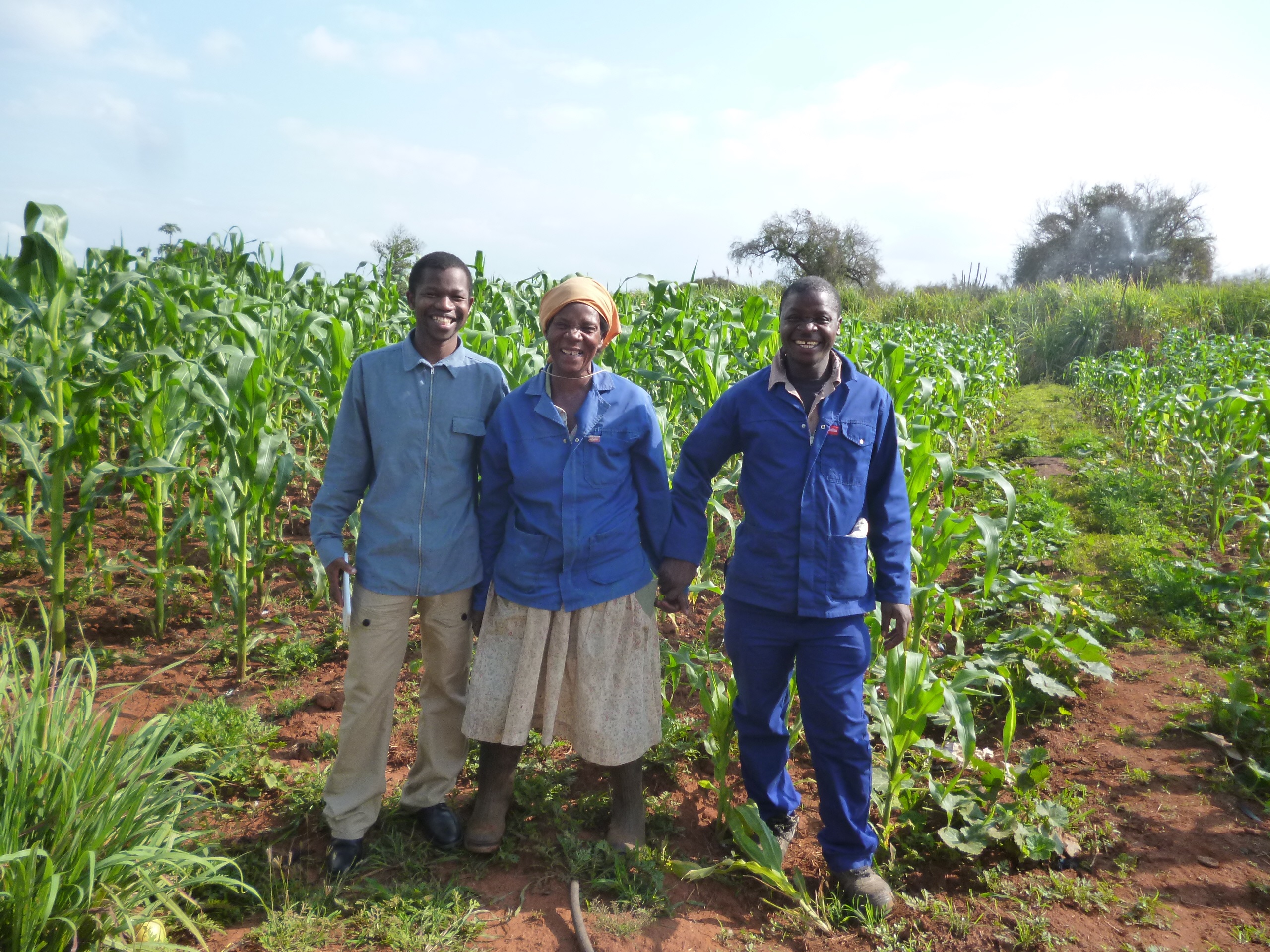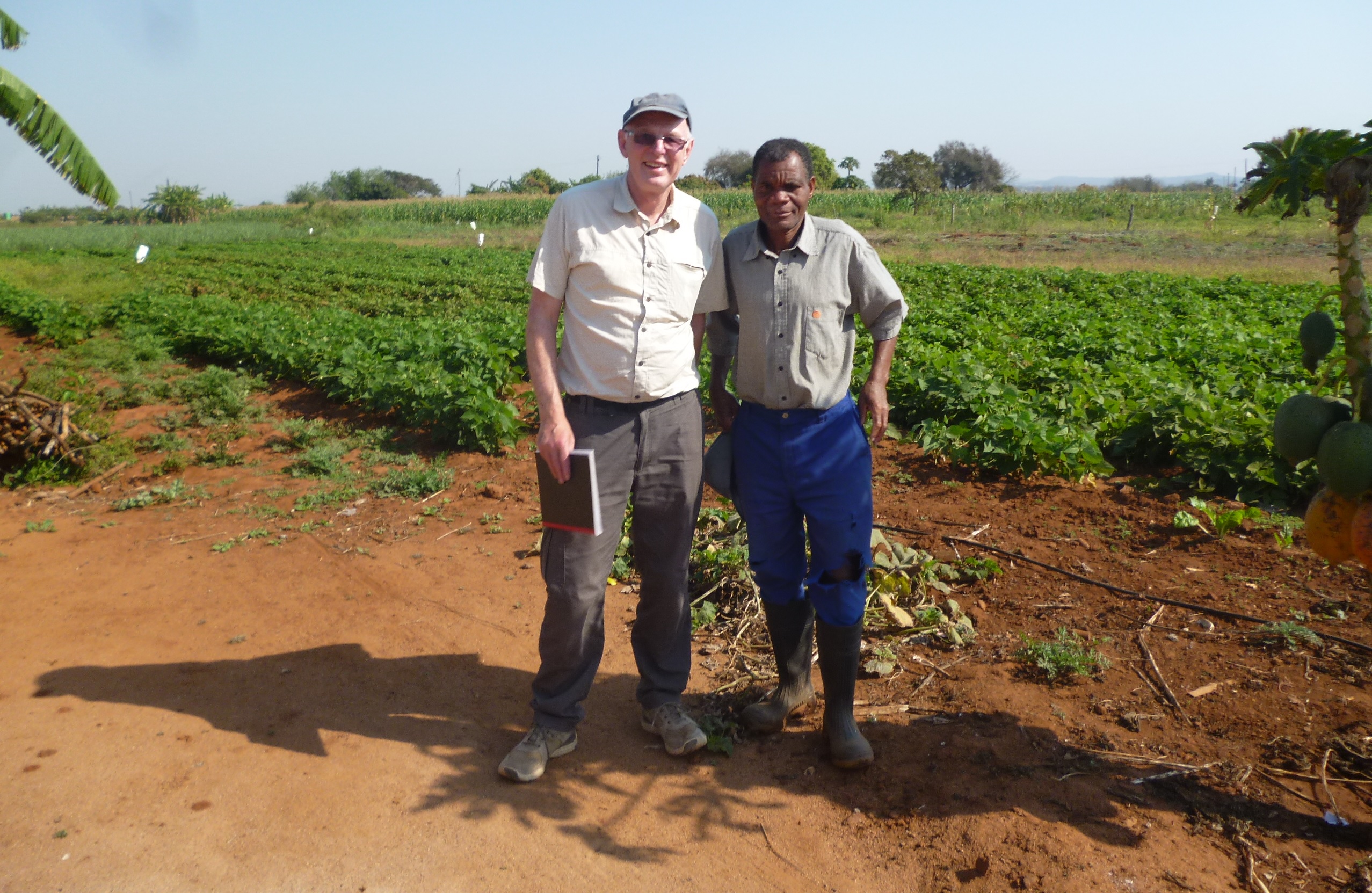
I returned to Tshaneni, Swaziland this summer to investigate how the 2013-16 El Niño drought which affected most of southern Africa impacted on the food security of a group of irrigated smallholder sugar cane farmers. Themba Mthethwa (RMI, Swaziland) and I have been researching impacts on sixty smallholder cane growers who are members of three farmers’ groups that depend on water stored in the Maguga Dam on the Komati River. These three groups are special, because they decided to stay in the middle of the cane fields to enable them to benefit from the water being supplied to the newly created, communally owned and managed sugar cane fields by keeping 0.25 hectares of land around their homesteads as irrigated home gardens.
I was last here in 2006 and the hope was that these gardens would provide an insurance for farmers against droughts, which are very common in the Lowveld, and enable them to be less dependent on the sugar cane mono-crop. By growing subsistence crops such as maize and a range of vegetables, they could sell any surplus on the market in Swaziland, or over the border in South Africa, less than 10 miles away.
 There is no doubt that since 2006, lives have been transformed, with farmers able to build new houses (in some cases), purchase vehicles and, most importantly, fund their children’s education.
There is no doubt that since 2006, lives have been transformed, with farmers able to build new houses (in some cases), purchase vehicles and, most importantly, fund their children’s education.
For example, Mr James Mahlalela (right, with Alan Terry) has funded all of his children through school and two have now graduated in South Africa – a remarkable achievement for a farmer who lives in a region which, when I first visited in 1994, before the arrival of irrigation, was wracked by almost 100 per cent absolute poverty levels.
 On very small areas of land (0.25 hectares), a good farmer such as Mr Mahlalela (right) – no relation to James – is able to produce more than three times the national average income through the intensive production of maize and is able to produce three crops per year. Fertility is maintained by exchanging maize stalks for cattle manure from local farmers, who rear cattle in kraals because they aren’t allowed into the cane fields.
On very small areas of land (0.25 hectares), a good farmer such as Mr Mahlalela (right) – no relation to James – is able to produce more than three times the national average income through the intensive production of maize and is able to produce three crops per year. Fertility is maintained by exchanging maize stalks for cattle manure from local farmers, who rear cattle in kraals because they aren’t allowed into the cane fields.
All these achievements have been put at risk because the extent and depth of the drought has exposed hidden vulnerabilities in the home gardens. By December 2015, water levels in the Maguga Dam, one of the largest in southern Africa, were such that rationing was imposed on all its water users (in November 2016, only 5 per cent of the stored water remained). By January 2016, this had fallen to three days per week (from six) and no farmer was allowed to water their home gardens, in order to protect sugar came yields. The subsequent drop in food production was catastrophic for the home gardeners as well as their rain-fed neighbours, who relied on the sale of surplus maize and vegetables to supplement the erratic supplies from their own farms, which had become totally unproductive during the drought.
Themba and I are researching the factors which made the irrigated farmers more or less vulnerable to an event that was common to all. At the same time, we must try to understand whether or not this has impacted on their long-term confidence in their irrigated farms to provide adequate food supplies. Are the irrigated gardens as good a solution to the frequent drought conditions as I had predicted in 2005? Or will predicted changes to the climate in the region make droughts such as that experienced in 2013-16 result in the same reduction in food production that occurred in 2016?
We have yet to analyse the results but expect our findings to reveal some insights that could be useful for policy makers in the region. Many farmers now question whether joining a communal sugar cane farm was worthwhile, because individually, they lost all food production last year, but they gained a relatively small dividend from the profit made on the sale of the sugar cane. However, had they not joined the scheme, they would not have been eligible to have received irrigation and therefore, their farms would have remained rain-fed and of very little productivity in such a low and erratic rainfall region. This area has, in the past few weeks, demonstrated some of the fundamental paradoxes of development.
